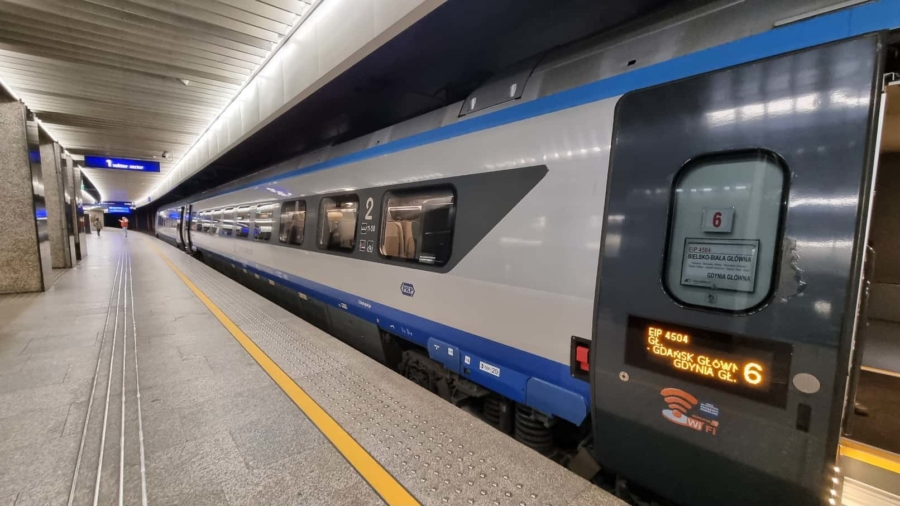In March 2024, I travelled between Gdańsk and Warsaw and Gdańsk and Łódź by train. Of course, return journeys were in question. The journeys between Gdańsk and Łódz were on the InterCity (IC) category of trains. From Gdańsk to Warsaw, I travelled on a TLK-category train. I travelled from Warsaw to Gdańsk on an EIP Express InterCity Premium train, otherwise known as the Pendolino. It’s been possible to travel on Pendolino trains in Poland since 14 December 2014.
Pendolino Trains in Poland – How it all began
First of all, we need to go back to 2011 to appreciate the beginning of Poland’s love affair with the Pendolino train. It was in May that year that PKP Intercity and French multinational rolling stock manufacturer, Alstom, signed a contract for the delivery of 20 trains to Poland. The agreement also stipulated that a technical base would be constructed at Warsaw Grochów. Alstom also agreed to provide technical support for a period of roughly 17 years.
The Arrival of the Pendolino in Poland and Testing Times
Fast forward to 2013. On 12 August that year, the first of the 20 blue and silver rolling stock arrived at Wrocław Main Railway Station after a long journey from the Italian Alstom factory. PKP Cargo was responsible for transportation.
With static tests already completed at the Alstom factory in Savigliano in Italy, the so-called dynamic tests – an assessment of a train in motion – were to be carried out in Poland. The majority of these tests took place on the test track belonging to the Railway Scientific and Research Institute near the Lower Silesian town of Żmigród. Testing there began on 19 August, 2013.
On October 24, the second train – ED250-002 – arrived in Poland. At the end of October, tests were carried out near Żmigród once again.
Moving on, tests on all railway lines began on October 30. First of all, the train was tested on the Warszawa Grochów – Konin section, where it reached a speed of 160 km/h. This was the maximum speed permitted on the Polish market at the time. However, it was anticipated that an EIP Pendolino train would comfortably be able to surpass 160 km/h on certain sections.
In the days following the tests on October 30, the Pendolino was tested near Grybów, in Nowy Sącz County, to check the train’s capabilities on steep ascents and descents. Thereafter, the Pendolino found itself on the Nidzica – Olsztyn section to see how it would behave on bendy sections.
On November 16, 2013, Pendolino tests began on the Central Railway Line. The train reached a speed of 242 km/h on the first day of testing. A day later, on the 184th kilometre of the Central Railway Main Line, the ED250 set a new speed record on Polish railway tracks of 270 km/h. This record was broken on November 23 when the Pendolino train reached 291 km/h. On November 24, the train reached a speed of 293 km/h.
Pendolino Services and Journey Times
Since December 14, 2014, Express InterCity Premium (EIP) category trains have been serving routes connecting Warsaw with Bielsko-Biała, Gdynia, Gliwice, Jelenia Góra, Katowice, Kołobrzeg, Kraków, Poznań, Rzeszów and Wrocław.
Here are some examples of Pendolino services together with their minimum to maximum journey times and daily frequency from 9 May 2024:
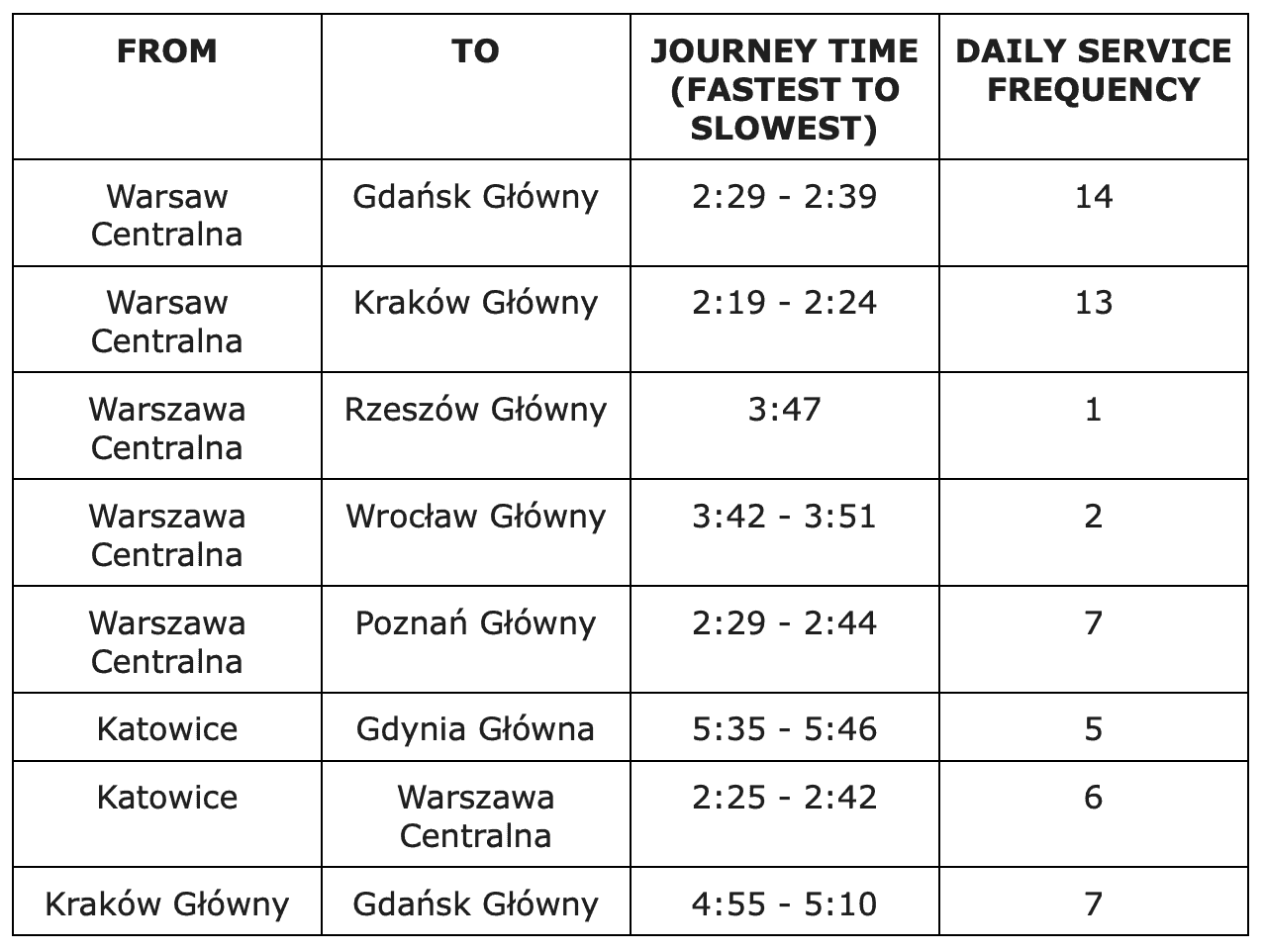
Just a few observations based on the information in the table above. First of all, it’s clear that Pendolino trains in Poland have unfinished business. It appears that the slowest Pendolino is on the route between Warsaw and Wrocław. I have read that this is due to the poor condition of the tracks, the outdated traction network and the sheer number of hills on the route. Modernisation along the route will eventually take the average speed of the Pendolino up to 160 km/h.
The fastest Pendolino runs on the Warsaw-Gdańsk route. I have read that the average commercial speed is around 170-180 km/h, while the maximum speed reaches up to 200-210 km/h on some sections. This is due to the modern, renovated line equipped with a traction network adapted to high speeds.
Regarding the Warsaw-Kraków route, I started off by analysing journey times in the middle of April 2024. Thereafter, I went on to check ticket prices for around May 10. By pure coincidence, I noticed that the journey times were around 10-15 minutes less than the times in April. Certainly, things are looking up for Pendolino trains in Poland.
Apparently, PKP PLK – the Polish railway infrastructure manager – is preparing the Central Railway Main Line (Centralna Magistrala Kolejowa – CMK) for a speed of 250 km/h. The Central Railway Main Line starts in Grodzisk Mazowiecki and ends in Zawiercie, connecting Warsaw with Kraków and Katowice. It is 224 km long. When Pendolino trains are able to accelerate to 250 km/h on the CMK, it will shorten the travel time from Warsaw to Krakow and Katowice to less than two hours.
Booking tickets and ticket prices for Pendolino Trains in Poland
If you wish to buy tickets for Pendolino trains in Poland, check out my recently updated post on how to purchase PKP Intercity tickets online.
This post also makes reference to PKP Intercity’s five levels of promotional fees, from Super Promo right down to Promo 15 (tickets which are 15% cheaper). However, I’d like to share a few examples now regarding prices of Super Promo and Promo Plus offers. If you wish to check out potential bargains for travel on PKP Intercity trains, I recommend you to peruse this price list for Promo tickets.
We’re interested in second-class ticket prices for the EIP Pendolino trains of course. My first observation is that the highest price of a Super Promo ticket on any route is 99 zł. When it comes to the connection between Gdańsk and Kraków, the base price of a ticket is 225 zł. However, if you time it right, you may be able to bag a Super Promo ticket for 99 zł or a Promo Plus ticket for 112 zł.
It’s a similar story should you wish to travel between Warsaw and Kraków. Super Promo tickets are available for only 49 zł, while Promo Plus tickets are priced at 71 zł.
Overall, with some patience, persistence when it comes to checking on a regular basis and the luxury of being able to plan a journey in advance, one can travel very cheaply on Pendolino trains in Poland.
All about the interior of an Express Intercity Premium EIP Pendolino Train
Two classes are offered on EIP trains: first and second. There are 402 seats on the train in total – 45 in first class (non-compartment carriage), and 357 in second.
Comfortable travel is guaranteed in the form of adjustable seats in both classes, individual lights, fold-out tables, coat hooks and electrical sockets beside every seat. There are four-seat areas in the carriages whereby two seats face another two seats separated by a table.
When it comes to luggage storage, shelves for hand luggage run down the length of each carriage just above the window seats. It’s possible to store large luggage on luggage shelves in both the passenger section as well as at the entrance to each carriage. Pendolino trains are equipped with bicycle hangers in carriage numbers 5 and 6.
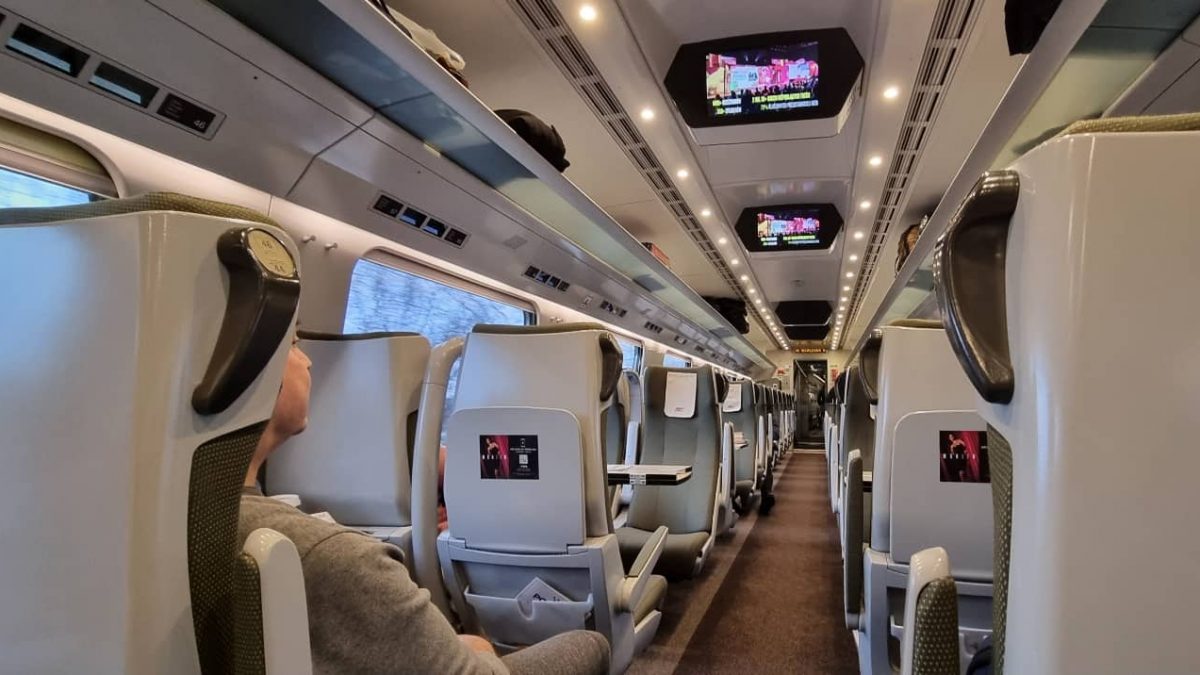
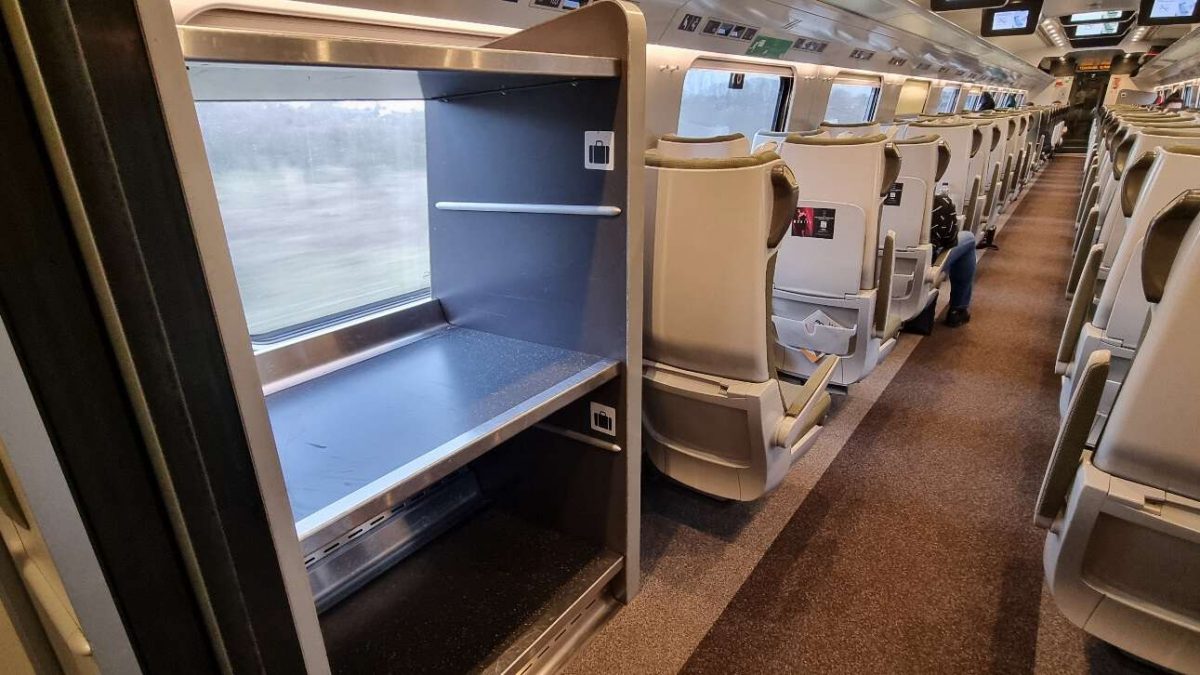
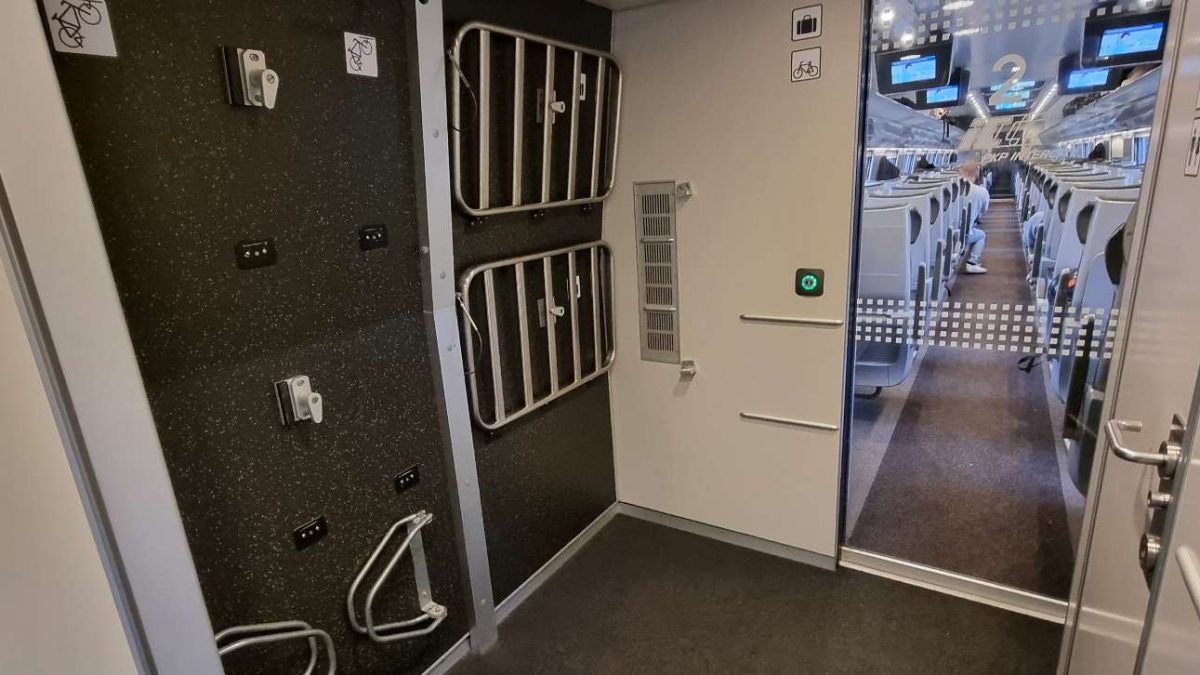
The Pendolino train caters to the needs of blind and vision-impaired passengers – the seats are marked with signs in Braille – as well as those with limited mobility. It is with them in mind that a ramp is mounted at the entrance to the carriage, allowing passengers in wheelchairs to board and disembark the train. Those on crutches can also use special chairs which enable them to safely enter the train. A specially designed toilet for disabled passengers is available in carriage number 3. The toilet is also equipped with a changing table for children. Finally, there are compartments for pregnant women and passengers with children up to age of six in carriage number 2.
Dining Car
The dining car on Pendolino trains in Poland is located in carriage number 3.
An extensive menu is on offer. It includes vegetarian dishes, breakfasts, snacks, salads, soups, main courses, desserts, hot drinks, cold drinks and alcoholic beverages. There’s also a limited menu for children.
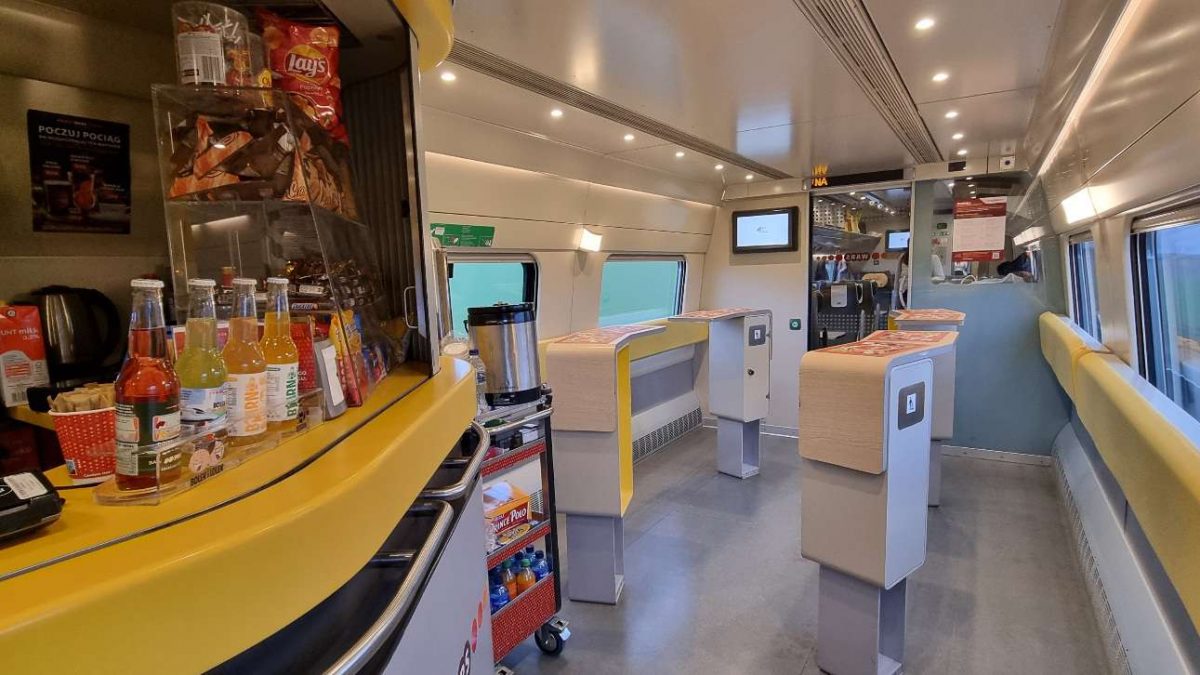
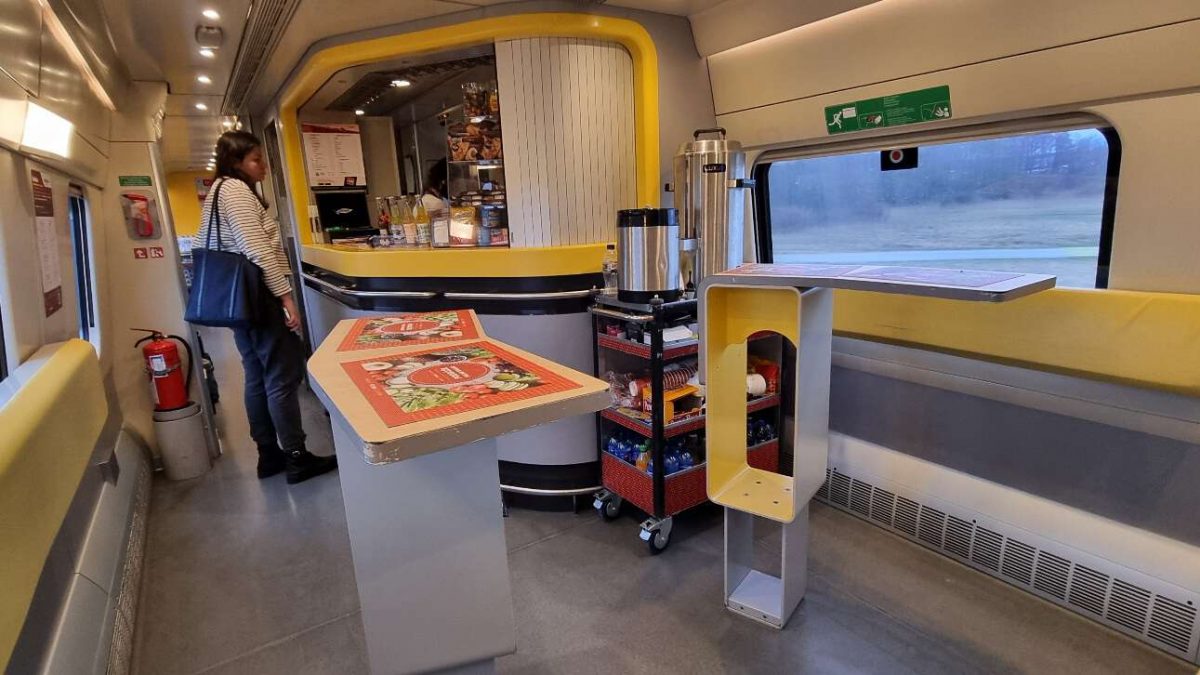
Travelling in Style
When it comes to value for money and overall comfort, it’s difficult to find fault with Pendolino trains in Poland.
I’ve only really been able to find fault with the seats. They’re a bit too narrow and ergonomic for my liking. It may surprise you to learn that I prefer the seats in the compartments of the TLK trains. As I observed travelling from Warsaw to Gdańsk in March 2024, everything else on Pendolino trains – from the cleanliness of the toilets to the ample space for luggage storage – really is faultless.
Back in 2005-06, I remember having to battle for a space to stand on dirty and poorly maintained TLK trains. Over the next few years, we are able to look forward to super clean and fast Pendolino trains whisking passengers between Warsaw and Kraków in less than two hours. I can’t believe how far Poland has come in terms of rail travel. Check out my post about how Polish rail travel has come on leaps and bounds since 2005.
FAQ – Pendolino Trains in Poland
The fastest journey time between Warsaw and Kraków by Pendolino is 2 hours and 19 minutes.
The fastest journey time between Warsaw and Gdańsk by Pendolino is 2 hours and 29 minutes.
There are 45 seats in the first class carriage on a Pendolino train in Poland. It’s a non-compartment carriage.
In total, there are 357 seats in second-class carriages on a Pendolino train in Poland.
The maximum operating speed of a Polish Pendolino train is 250 km/h.

